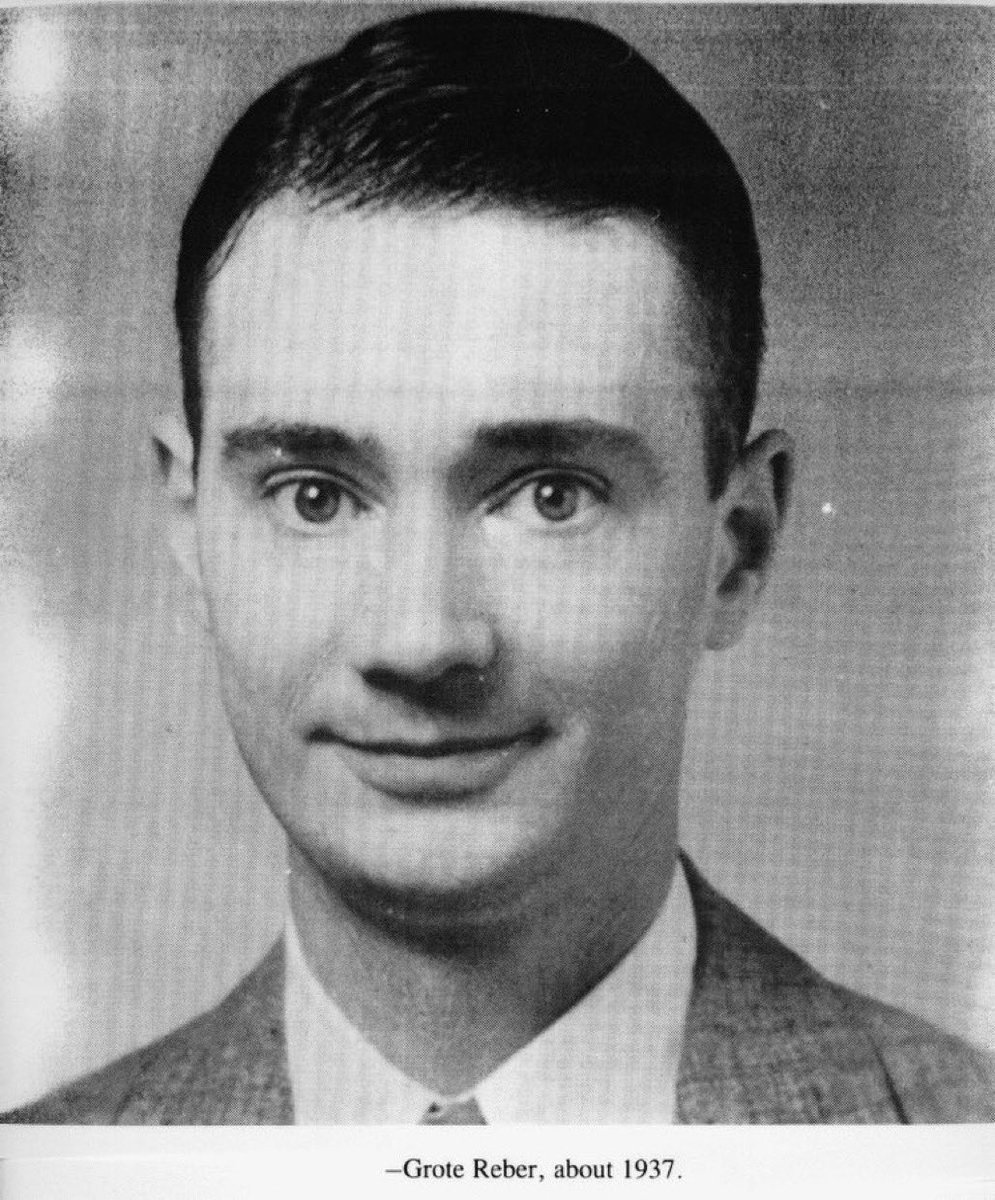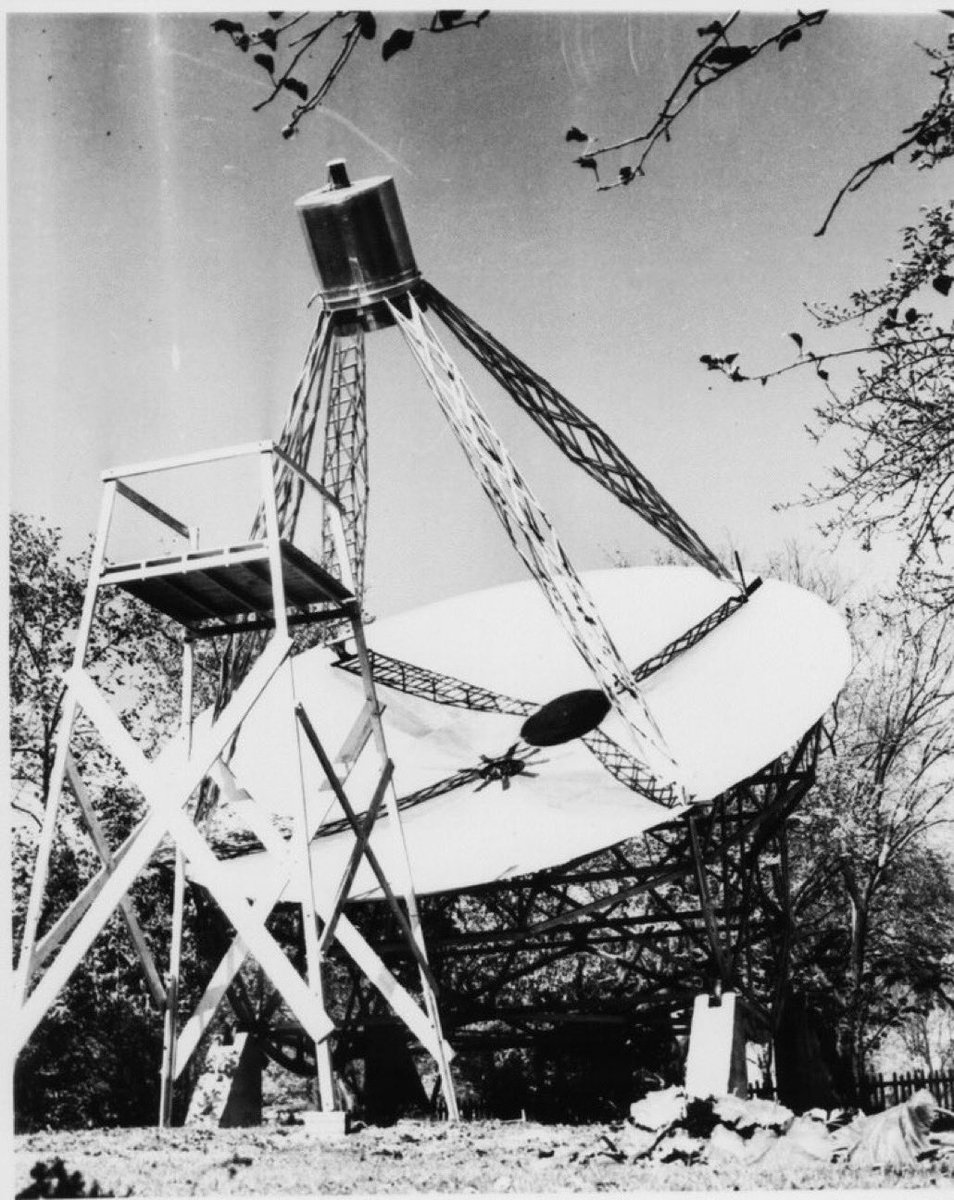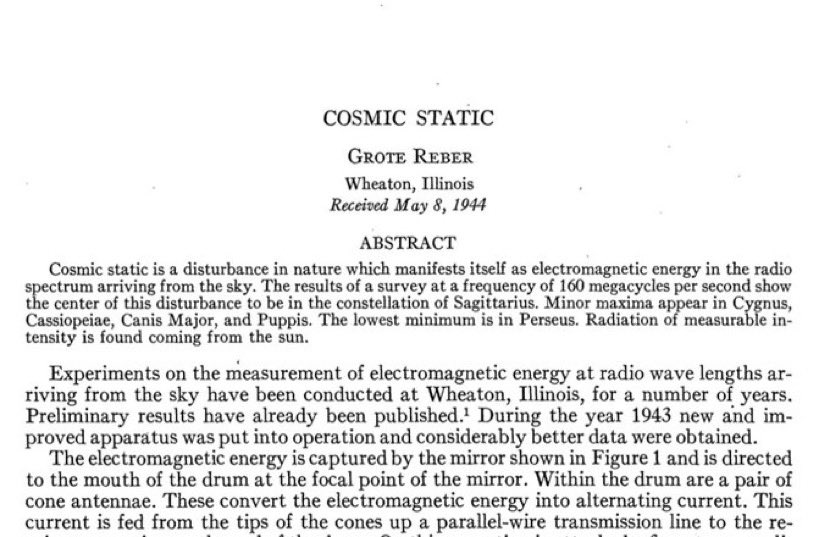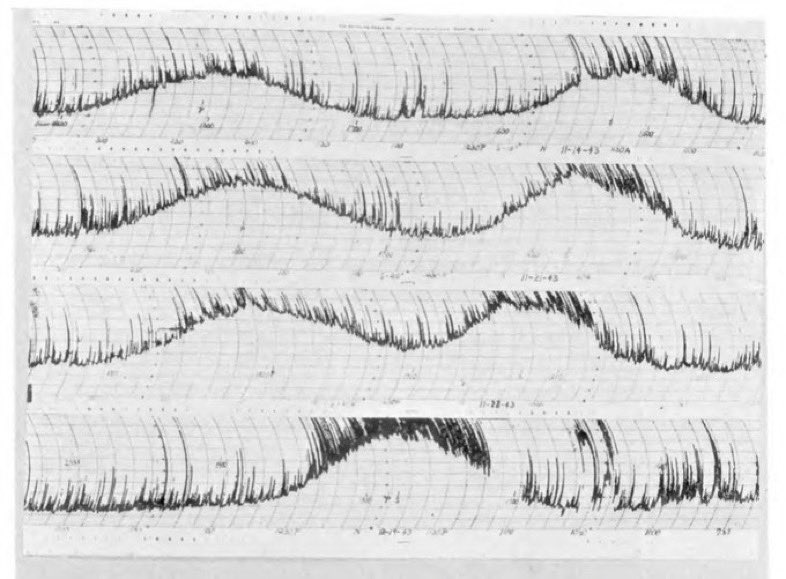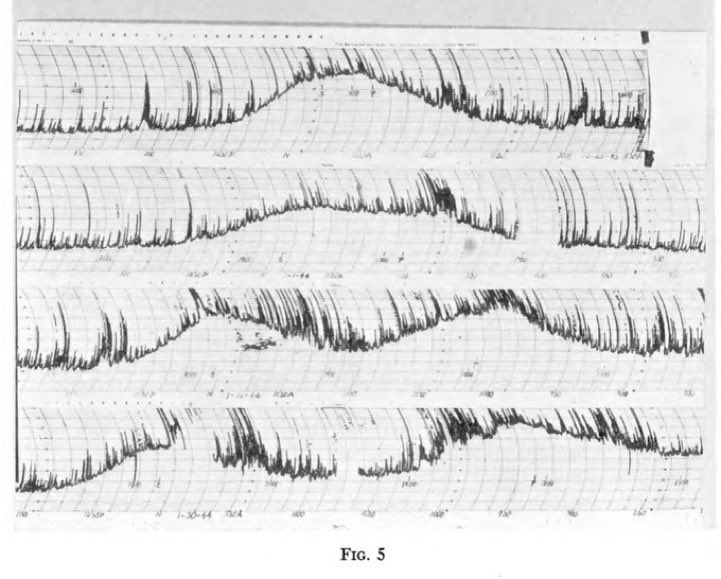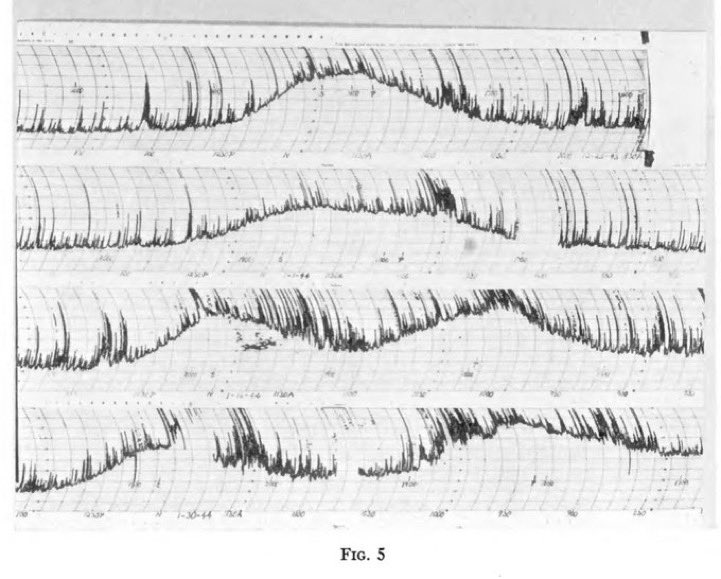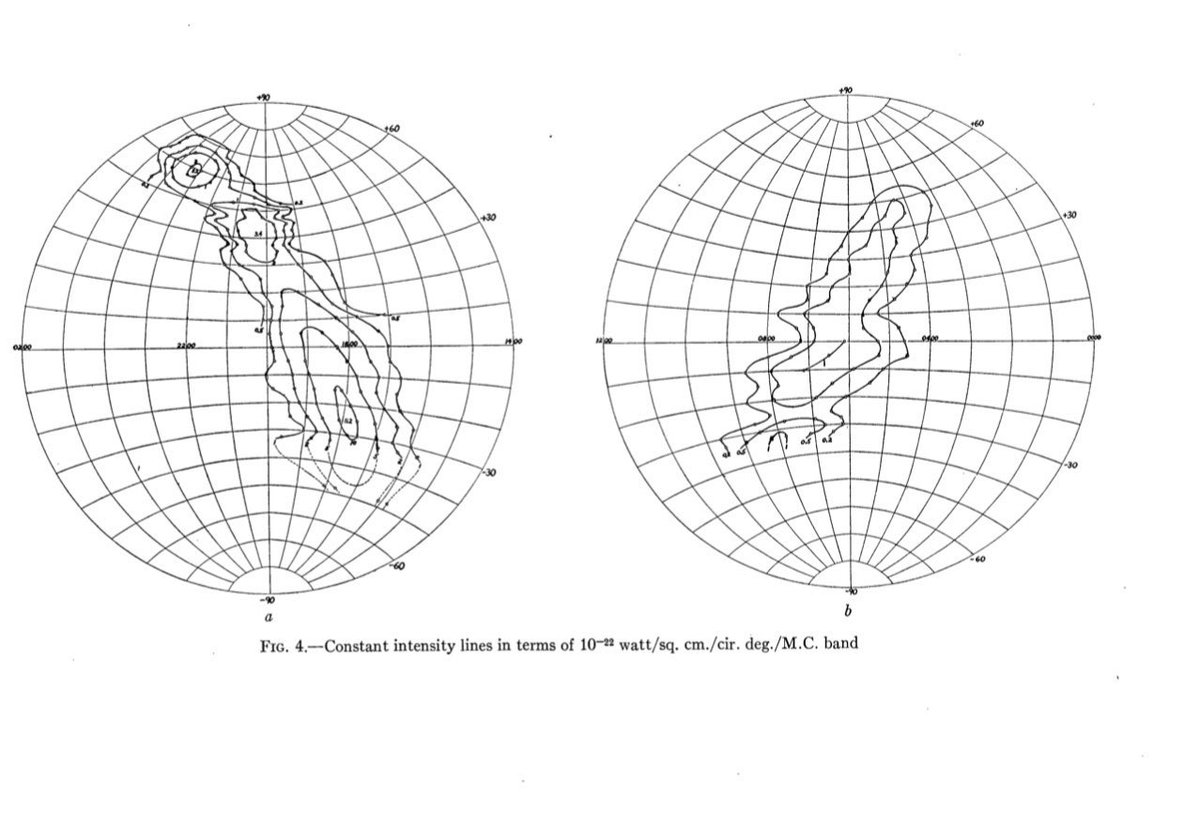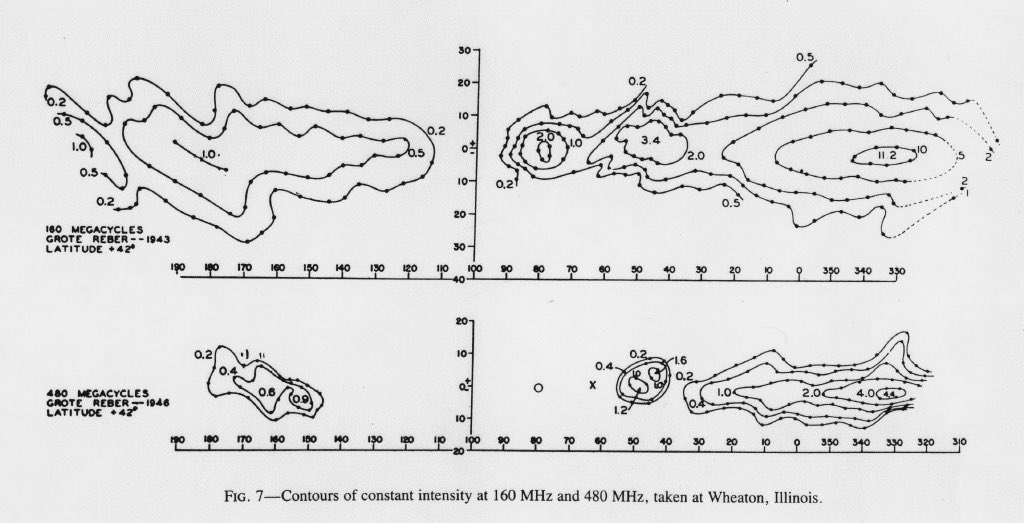Radio engineer, amateur astronomer, and Chicagoan Grote Reber was born #OTD in 1911. After reading about Karl Jansky’s accidental discovery of galactic radio emissions, he built a 9m radio telescope *in his back yard* and carried out the first radio survey of the sky.
Image: NRAO
Image: NRAO
Here’s a thread about Jansky and his remarkable discovery, which inspired Reber. https://twitter.com/mcnees/status/1319277237753901056
Reber applied for jobs that would allow him to work with Jansky at Bell Labs, but it was the Great Depression and they simply weren’t devoting any resources to that sort of work. So in 1937 Reber built his own 9m radio telescope in his back yard. #TeamRadio
Image: NRAO
Image: NRAO
It took him a few years (he was starting from scratch!) but Reber was eventually able to confirm Jansky’s discovery of radio emissions by the Milky Way. He published his findings in 1944, in an Astrophysical Journal paper titled “Cosmic Static.”
https://ui.adsabs.harvard.edu/abs/1944ApJ...100..279R/abstract
https://ui.adsabs.harvard.edu/abs/1944ApJ...100..279R/abstract
Figure 5 in this paper tracks the sun passing across the center of the Milky Way over a period of several months. Here I’ve split the figure into two parts — the wide peaks are the Sun and the Milky Way.
Do you see the small sharp lines that appear all across the plot? They are produced by sparking in the ignitions of passing cars. Reber had to mostly observe at night, when there was less traffic!
Already in that first paper, Reber was able to draw contour maps of emissions on the sky. He produced much more detailed maps in later papers.
Fig 1: “Cosmic Static,” G. Reber, 1944
Fig 2: “Galactic Radio Waves,” G.Reber, 1949
Fig 1: “Cosmic Static,” G. Reber, 1944
Fig 2: “Galactic Radio Waves,” G.Reber, 1949
In the process of producing radio maps of the sky, Reber found a paradox. It was expected that radio emissions were due to black body emissions of hot objects like stars. If that were the case, there should be more emissions at higher frequency. But that wasn’t what Reber found.
Instead, he found more radio emissions than expected. These emissions were the result of synchrotron radiation produced by relativistic charged particles being accelerated by magnetic fields.
(Astrophysical synchrotron radiation wasn’t well understood until the work of Ginzburg and others in the 1950s. I am not an expert and do not know the history well enough to address the question of priority.)
Anyway, throughout this whole period Reber was basically the only radio astronomer in the world.
Something you may not know is that in astronomy and physics and many other sciences there is always a “loneliest sub-field” with only one person (or maybe a handful of people) in it.
Radio Astronomy began to grow as a field after WWII, when scientists and engineers who had worked on radar turned their attention to the the findings of Jansky and Reber.
Eventually, Reber became interested in low-frequency cosmic radio waves. The areas he had previously worked on were now dominated by well-funded teams of scientists and engineers building large and powerful radio telescopes.
But these radio waves are reflected by the ionosphere; there aren’t that many places on Earth where you can consistently observe them. So Reber moved to Tasmania where lulls in ionosphere activity during the winter allowed for observations.
As a capable and enthusiastic amateur, Reber almost single-handedly crafted an entire sub field of astronomy. (He also subscribed to some outlandish explanations for cosmological observations.) He spent most of the rest of his life in Tasmania, and passed away in 2002.
In honor of Grote Reber, please tell me your favorite example of a “loneliest sub-field” (in any field, not just the sciences) in the replies.
@AdlerPlanet Hey Adler, here’s a thread on a famous Chicago astronomer that your followers may not know about!

 Read on Twitter
Read on Twitter